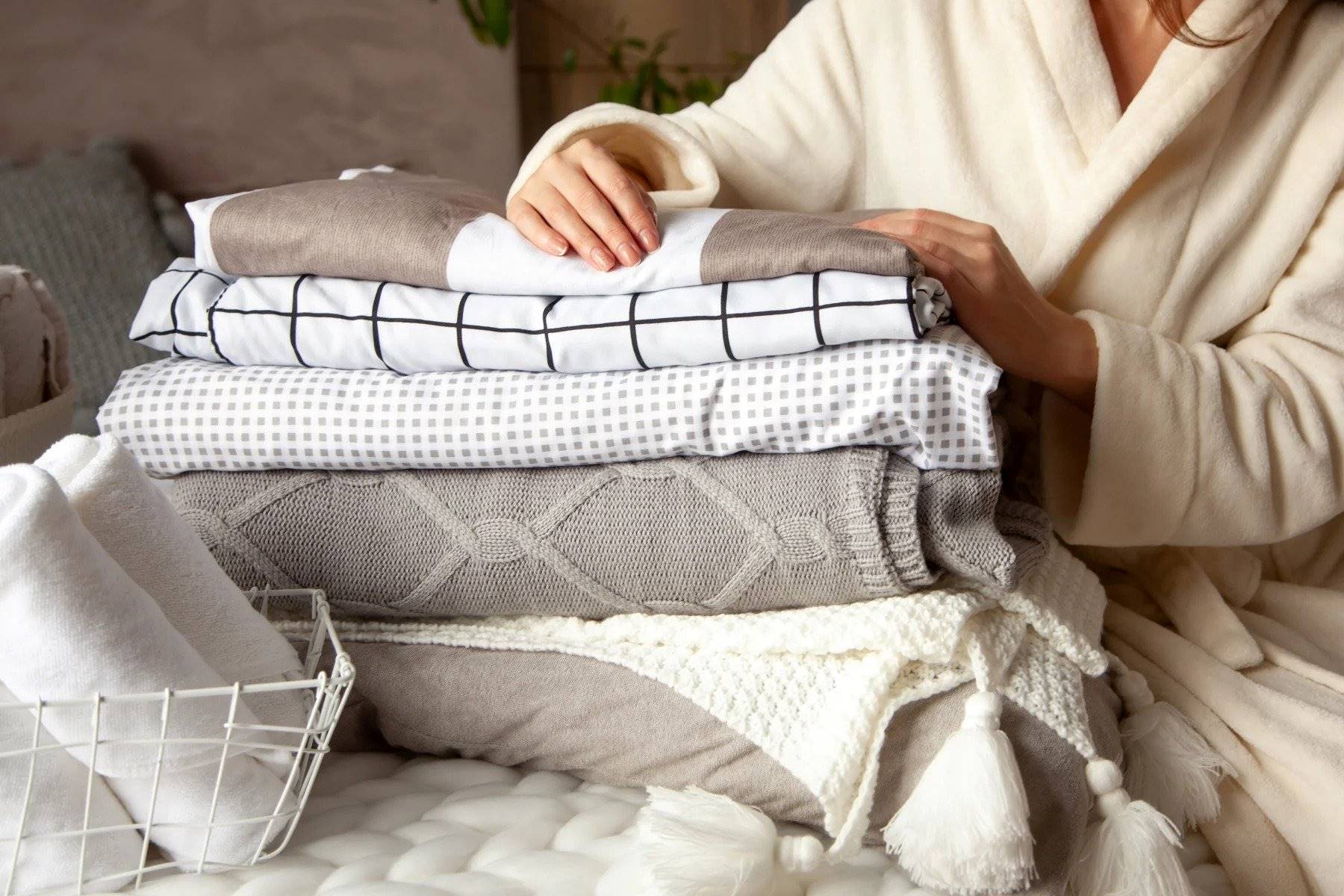

Articles
How To Remove Stains From A Blanket
Modified: March 2, 2024
Learn effective techniques and tips from our articles on how to remove stains from a blanket. Say goodbye to stubborn stains with our expert advice.
(Many of the links in this article redirect to a specific reviewed product. Your purchase of these products through affiliate links helps to generate commission for Storables.com, at no extra cost. Learn more)
Introduction
Blankets are an essential part of our daily lives, providing warmth, comfort, and coziness. However, they are also prone to getting stained, whether from accidental spills, pet accidents, or everyday use. Removing stains from a blanket can be a daunting task, especially if you’re unsure of the proper techniques and products to use.
In this article, we will guide you through the process of effectively removing stains from your blanket, ensuring its cleanliness and longevity. We will discuss different types of stains and provide step-by-step instructions on how to tackle them. By following our tips and recommendations, you’ll be able to restore your blanket to its pristine condition.
Before diving into the specific stain removal methods, it’s important to note that different types of stains require different approaches. Understanding the nature of the stain is crucial in order to determine the proper cleaning method. Common stains on blankets include food and beverage stains, ink and pen marks, oil and grease stains, blood and sweat stains, urine and vomit stains, as well as mold and mildew stains.
It’s essential to take proper care of your blanket to ensure its longevity. Regular cleaning and stain removal are key to maintaining its appearance and functionality. With the right techniques and products, you can easily tackle even the toughest stains and enjoy a fresh and clean blanket.
Now, let’s dive into the different types of stains and how to effectively remove them from your blanket.
Key Takeaways:
- Say goodbye to stubborn stains on your blanket by acting quickly, using the right cleaning solutions, and following proper techniques for each type of stain. Enjoy a fresh and clean blanket with these effective stain removal methods.
- Restore your blanket to its pristine condition with specialized cleaners, gentle scrubbing, and thorough rinsing. Tackle even the toughest stains and enjoy a cozy haven for comfort and relaxation.
Read more: How To Remove Stains From Furniture
Understanding Different Types of Stains
Before you can effectively remove stains from a blanket, it’s important to understand the different types of stains you might encounter. Each type of stain requires a specific approach and cleaning method. Let’s explore the most common types of stains and the best ways to tackle them.
1. Food and Beverage Stains: Whether it’s a spill from your morning coffee or a sauce stain from dinner, food and beverage stains are a common occurrence on blankets. To remove these stains, start by blotting up any excess liquid with a clean cloth or paper towel. Then, mix a solution of gentle dish soap and warm water. Gently dab the stain with the solution using a clean cloth, working from the outside in. Rinse with warm water and blot dry.
2. Ink and Pen Stains: Ink and pen stains can be stubborn and difficult to remove. To tackle these stains, start by blotting up any excess ink with a clean cloth or paper towel. Next, try using rubbing alcohol or a stain remover specifically designed for ink stains. Apply it to the stain using a cloth or a cotton ball, and gently blot. Rinse with warm water and repeat the process if necessary.
3. Oil and Grease Stains: Oil and grease stains can be tough to remove, but with the right approach, it’s possible to eliminate them. Start by blotting up any excess oil or grease with a clean cloth. Then, apply a small amount of dish soap directly to the stain and gently work it in using a soft brush or your fingers. Let the soap sit on the stain for a few minutes before rinsing with warm water. Repeat the process if needed.
4. Blood and Sweat Stains: Blood and sweat stains can leave unsightly marks on your blanket. To remove these types of stains, start by soaking the affected area in cold water for at least 30 minutes. Then, gently scrub the stain with a mixture of hydrogen peroxide and mild dish soap. Rinse thoroughly and launder the blanket as usual.
5. Urine and Vomit Stains: Dealing with urine or vomit stains can be unpleasant, but prompt action can help prevent permanent damage. Start by blotting up any excess liquid with a clean cloth or paper towel. Then, apply a mixture of vinegar and water to the stain and let it sit for a few minutes. Blot the stain with a cloth or sponge, and rinse with warm water. Repeat if necessary.
6. Mold and Mildew Stains: Mold and mildew stains can be a result of moisture and lack of proper ventilation. To remove these stains, start by brushing off any loose mold or mildew with a soft brush or cloth. Mix a solution of bleach and water (one part bleach to three parts water) and apply it to the stained area. Let it sit for a few minutes before rinsing thoroughly. Ensure that the blanket is completely dry before storing or using it again.
By understanding the different types of stains and the appropriate cleaning methods, you’ll be better equipped to tackle any stains that may appear on your blanket. Remember to always test any cleaning solution or method in a small, inconspicuous area before applying it to the entire stain, and follow any care instructions provided by the manufacturer.
Next, let’s move on to preparing the blanket for stain removal.
Preparing the Blanket for Stain Removal
Before diving into the stain removal process, it’s important to properly prepare the blanket to ensure the best possible results. Preparing the blanket involves a few simple steps that will help loosen the stain and make it easier to remove. Let’s explore how to prepare your blanket for stain removal.
1. Act quickly: The faster you address a stain, the easier it will be to remove. As soon as you notice a stain on your blanket, try to address it promptly. This will prevent the stain from setting and becoming more challenging to remove.
2. Read the care label: Before applying any cleaning solutions or methods, carefully read the care label on your blanket. The label will provide useful information on the specific cleaning instructions recommended by the manufacturer. Follow these instructions to avoid damaging the fabric or compromising the blanket’s quality.
3. Blot, don’t rub: When dealing with a fresh stain, remember to blot the area instead of rubbing it vigorously. Rubbing can spread the stain and push it further into the fabric, making it more difficult to remove. Use a clean cloth or paper towel to gently blot the stain, absorbing as much of the liquid as possible.
4. Test a small area: Before applying any cleaning solution to the entire stain, it’s always a good idea to test it on a small, inconspicuous area of the blanket. This will help you determine if the solution is safe to use and if it will have any adverse effects on the fabric. Wait for the tested area to dry and check for any color fading or damage before proceeding.
5. Remove loose debris: If the stain has loose debris or solids, gently remove them before applying any cleaning solutions. You can use a soft brush or your fingers to carefully brush off any particles without spreading the stain further.
6. Use mild cleaning solutions: When preparing the blanket for stain removal, it’s best to opt for mild cleaning solutions. Harsh chemicals can damage the fabric and affect the blanket’s color and texture. Instead, choose gentle dish soap, vinegar, hydrogen peroxide, or specialized stain removers designed for the specific type of stain you’re dealing with.
7. Follow the proper technique: Different stains may require different cleaning techniques. For example, when blotting a stain, always work from the outside in to avoid spreading it further. When scrubbing, use a soft brush or cloth and apply gentle pressure to prevent damaging the fabric. Follow the specific techniques discussed in the previous sections based on the type of stain you’re dealing with.
By following these preparatory steps, you’ll ensure the best outcome when it comes to removing stains from your blanket. Remember to follow the specific cleaning instructions for your specific type of stain and fabric. Now, let’s dive into the specific methods for removing different types of stains from your blanket.
Removing Food and Beverage Stains
Food and beverage stains are some of the most common stains found on blankets. Whether it’s a spilled drink or a smudge from your favorite snack, these stains can be unsightly and challenging to remove. However, with the right approach, you can effectively eliminate food and beverage stains from your blanket. Let’s explore the step-by-step process for removing these types of stains.
1. Act quickly: The sooner you address a food or beverage stain, the greater your chances of successfully removing it. Start by blotting up any excess liquid with a clean cloth or paper towel. Avoid rubbing the stain, as it can push it deeper into the fabric.
2. Prepare a cleaning solution: Mix a gentle dish soap with warm water to create a cleaning solution. Use approximately one teaspoon of dish soap for every cup of warm water. Avoid using hot water, as it can set the stain.
3. Apply the cleaning solution: Dip a clean cloth or sponge into the cleaning solution and gently dab it onto the stained area. Work from the outside of the stain inward to prevent it from spreading. Avoid saturating the fabric; a light application is usually sufficient.
4. Blot the stain: After applying the cleaning solution, use a clean cloth or paper towel to blot the stain. Continue blotting until you see the stain transferring to the cloth. Rotate the cloth to a clean area as needed to prevent reapplying the stain to the fabric.
5. Rinse the area: Once you’ve removed the majority of the stain, rinse the area with cool water to remove any remaining cleaning solution. Continue rinsing until the water runs clear and there are no soapy residues left on the fabric.
6. Air dry and inspect: Allow the blanket to air dry completely. Once dry, carefully inspect the treated area to ensure the stain has been completely removed. If any traces of the stain remain, repeat the process or try an alternative stain removal method specific to the type of stain you’re dealing with.
7. Launder if necessary: If the blanket’s care instructions allow, you can proceed to launder the entire blanket to freshen it up. Follow the manufacturer’s guidelines for washing and drying to prevent any damage to the fabric.
Remember, different types of food and beverage stains may require slightly different approaches or additional steps. For example, for stubborn stains like red wine or coffee, you may need to apply a specialized stain remover or try alternative methods such as using white vinegar or baking soda. Always refer to the specific stain removal techniques for the particular type of stain you’re dealing with.
By following these steps and acting quickly, you can effectively remove food and beverage stains from your blanket, ensuring it remains clean and fresh for years to come. Now, let’s move on to the techniques for treating ink and pen stains.
Treating Ink and Pen Stains
Ink and pen stains can be stubborn and challenging to remove from blankets. Whether you accidentally left a pen uncapped or your little one decided to express their artistic skills on your favorite blanket, dealing with ink stains requires a different approach. With the proper techniques, you can effectively treat ink and pen stains and restore your blanket to its original condition. Let’s dive into the step-by-step process for treating these stains.
1. Act quickly: As soon as you notice an ink or pen stain on your blanket, it’s crucial to act swiftly. The longer the stain sits, the harder it becomes to remove. Blot up any excess ink with a clean cloth or paper towel, being careful not to spread the stain further.
2. Test the fabric: Before applying any cleaning solution to the entire stain, test it on a small, inconspicuous area of the blanket. This will help ensure that the cleaning solution won’t damage or discolor the fabric. Wait for the test spot to dry and check for any adverse reactions before proceeding.
3. Use rubbing alcohol: Rubbing alcohol is one of the most effective solutions for removing ink and pen stains from fabrics. Moisten a clean cloth or cotton ball with rubbing alcohol and gently dab the stained area. Work from the outside of the stain inward to prevent it from spreading. As you dab, you’ll notice the ink transferring onto the cloth.
4. Rinse and repeat: After treating the stain with rubbing alcohol, rinse the area with cool water. Continue rinsing until the water runs clear and there are no traces of ink left on the fabric. If the stain persists, repeat the process, focusing on the remaining ink stains, and rinse again.
5. Try specialized stain removers: If rubbing alcohol isn’t completely effective in removing the ink stain, you can consider using a specialized stain remover specifically formulated for ink stains. Follow the instructions on the stain remover’s packaging, taking care to pre-test on a small area first.
6. Launder if appropriate: Depending on the fabric and care instructions, you may choose to launder the blanket after treating the ink stain. Follow the manufacturer’s guidelines for washing and drying to ensure the optimal care for your blanket.
7. Seek professional help if needed: In some cases, particularly for older or stubborn ink stains, it may be necessary to seek professional help from a fabric cleaner or dry cleaner. They have access to specialized techniques and solvents that can effectively remove ink stains without damaging the fabric.
Remember, ink and pen stains can be challenging to remove, and the success of stain removal depends on various factors such as the type of ink, the fabric of the blanket, and the time elapsed since the stain occurred. It’s always best to act quickly, test cleaning solutions, and be patient during the stain removal process.
Now that you know how to treat ink and pen stains, let’s move on to eliminating oil and grease stains from your blanket.
Read more: How To Remove Stains From Stucco
Eliminating Oil and Grease Stains
Oil and grease stains can be a common occurrence on blankets, whether from cooking mishaps, oily hair, or accidental spills. These stains can be stubborn and leave behind unsightly marks if not treated properly. However, with the right techniques and products, you can effectively eliminate oil and grease stains from your blanket. Let’s explore the step-by-step process for removing these types of stains.
1. Act quickly: As soon as you notice an oil or grease stain, it’s important to act promptly. Begin by placing a clean cloth or paper towel on top of the stain to absorb any excess oil or grease. Avoid rubbing or spreading the stain, as it can make the stain worse.
2. Remove loose debris: If the stain has any loose debris or solids, gently lift them off the fabric using a plastic spoon or blunt object. Be careful not to push the debris further into the fibers.
3. Apply a grease-cutting agent: To break down the oil or grease, apply a grease-cutting agent directly to the stain. There are several options you can use: dish soap, laundry pre-treatment spray, or a specialized stain remover designed for oil and grease stains. Dilute the dish soap in water or follow the instructions on the pre-treatment spray or stain remover.
4. Gently work the cleaning solution: Using a clean cloth or soft brush, gently work the cleaning solution into the stain. Start from the outer edges of the stain and work your way toward the center. Avoid applying too much pressure, as it can spread the stain further.
5. Let it sit: Allow the cleaning solution to sit on the stain for a few minutes. This will give it time to break down the oil or grease, making it easier to remove.
6. Rinse the stain: Rinse the stained area with warm water. You can do this by gently blotting the area with a cloth or running warm water over the stain. Continue rinsing until the water runs clear and there are no traces of the cleaning solution remaining.
7. Air dry and assess: Allow the blanket to air dry completely. Once dry, assess the treated area for any remaining residue or discoloration. If the stain persists, repeat the process or try an alternative stain removal method.
8. Launder the blanket: If the care instructions allow, you can proceed to launder the entire blanket to refresh it. Follow the manufacturer’s guidelines for washing and drying, taking care to use the appropriate water temperature and laundry detergent.
Remember, oil and grease stains can be challenging to remove, especially if they have set in or if the fabric is delicate. If the stain persists after multiple attempts, it’s advisable to seek professional help from a fabric cleaner or dry cleaner.
Now that you know how to eliminate oil and grease stains, let’s move on to removing blood and sweat stains from your blanket.
Mix a solution of equal parts white vinegar and water, then gently blot the stain with a clean cloth. For tougher stains, apply a small amount of laundry detergent directly to the stain before washing.
Removing Blood and Sweat Stains
Blood and sweat stains can be common on blankets, whether from accidental cuts, nosebleeds, or perspiration. These stains can be unsightly and may require special attention to effectively remove them. With the right techniques and products, you can tackle blood and sweat stains and restore your blanket to its original condition. Let’s explore the step-by-step process for removing these types of stains.
1. Act quickly: As soon as you notice a blood or sweat stain on your blanket, it’s important to act swiftly. Begin by blotting up any excess moisture with a clean cloth or paper towel. Avoid rubbing the stain, as it can spread the blood or sweat further into the fabric.
2. Rinse with cold water: For blood stains, start by rinsing the stained area with cold water. Cold water helps prevent the blood from setting into the fabric. Hold the stained area under a gentle stream of cold water, allowing it to flow through the fabric and help remove the stain. Continue rinsing until the water runs clear.
3. Pre-treat with mild dish soap: After rinsing with cold water, pre-treat the remaining blood or sweat stain by applying a small amount of mild dish soap directly to the stained area. Gently work the dish soap into the fabric using your fingers or a soft brush, making sure to cover the entire stain.
4. Scrub and soak: After applying the dish soap, scrub the stained area gently with a soft brush. This helps to further loosen the stain. Then, let the blanket soak in a solution of cold water and mild detergent for about 15-30 minutes. The detergent will help break down the stain further.
5. Rinse and assess the stain: After soaking, rinse the blanket thoroughly with cold water, making sure to remove all traces of the soap and detergent. Assess the stain to see if it has been completely removed. If the stain persists, repeat the soaking and scrubbing process or consider using a specialized enzyme-based stain remover for blood stains.
6. Launder the blanket: If the stain is no longer visible and the care instructions allow, proceed to launder the entire blanket. Follow the manufacturer’s guidelines for washing and drying, using the appropriate water temperature and laundry detergent.
7. Air dry and inspect: Once the blanket is laundered, air dry it completely. Once dry, carefully inspect the treated area to ensure the stain has been completely removed. If any traces of the stain remain, repeat the stain removal process or explore alternative stain removal methods.
Remember, blood and sweat stains can be challenging to remove, especially if they have set in or if the fabric is delicate. If the stain persists even after multiple attempts, it’s advisable to seek professional help from a fabric cleaner or dry cleaner.
Now that you know how to remove blood and sweat stains, let’s move on to tackling urine and vomit stains from your blanket.
Tackling Urine and Vomit Stains
Dealing with urine or vomit stains on blankets can be unpleasant, but prompt action can help prevent permanent damage and odors. Whether it’s a pet accident or a result of illness, it’s important to effectively tackle these stains to maintain the cleanliness and freshness of your blanket. With the right techniques and products, you can effectively remove urine and vomit stains from your blanket. Let’s explore the step-by-step process for tackling these types of stains.
1. Act quickly: As soon as you discover a urine or vomit stain on your blanket, act swiftly. Start by blotting up any excess moisture with a clean cloth or paper towel. Avoid rubbing the stain, as it can push the liquid deeper into the fabric.
2. Hand wash or machine wash: Depending on the size of the stain and the care instructions of your blanket, determine whether to hand wash or machine wash the stained area. If the care instructions allow, machine wash the entire blanket to ensure thorough cleaning. Hand washing is ideal for smaller or delicate blankets.
3. Pre-treat the stain: Before washing, pre-treat the urine or vomit stain with a stain remover or a mixture of vinegar and water. Apply the stain remover directly to the stained area, following the product instructions. If using the vinegar and water mixture, combine equal parts vinegar and water in a spray bottle and saturate the stain. Let it sit for a few minutes to help break down the stain.
4. Wash the blanket: If machine washing, add the appropriate amount of laundry detergent according to the manufacturer’s instructions. Set the machine to a gentle cycle with cold water. If hand washing, fill a basin or sink with cold water and add the desired amount of detergent. Gently agitate the blanket in the soapy water for a few minutes.
5. Rinse and inspect: After washing, rinse the blanket thoroughly to remove any remaining detergent or stain remover. For machine wash, use cold water in the rinse cycle. For hand wash, rinse the blanket under cold running water until the water runs clear. Inspect the stained area to determine if the stain has been completely removed. If any traces remain, repeat the stain removal process or try a different stain removal method.
6. Dry the blanket: Once the stain is removed, dry the blanket according to the care instructions. If machine drying is recommended, use a low heat setting or air dry to prevent any shrinkage or damage to the fabric. For delicate blankets, lay them flat to air dry on a clean, dry surface.
7. Odor elimination: If there is any residual odor after washing and drying, you can eliminate it by sprinkling baking soda on the blanket. Allow the baking soda to sit for a few hours before vacuuming it off. This will help absorb any remaining odors.
Remember to act quickly when it comes to urine and vomit stains to prevent further absorption and potential odor issues. If the stain or odor persists even after multiple attempts, it’s advisable to seek professional cleaning services.
Now, let’s move on to the techniques for dealing with mold and mildew stains on your blanket.
Dealing with Mold and Mildew Stains
Mold and mildew stains can occur on blankets when they are exposed to moisture and lack proper ventilation. These stains not only look unsightly but can also lead to unpleasant odors and potential health concerns. It’s important to deal with mold and mildew stains promptly to prevent further damage and maintain the cleanliness of your blanket. With the right approach, you can effectively address mold and mildew stains on your blanket. Let’s explore the step-by-step process for dealing with these types of stains.
1. Safety precautions: Before handling moldy or mildewed blankets, it’s essential to take safety precautions. Wear protective gloves and a mask to prevent inhalation of mold spores and the spread of allergens. Conduct the stain removal process in a well-ventilated area to minimize exposure.
2. Brush off loose mold: Start by brushing off any loose mold or mildew from the blanket’s surface using a soft brush or a cloth. Be gentle to avoid spreading the mold spores further.
3. Remove the stain: Mix a solution of bleach and water, using one part bleach to three parts water. You can also use a commercial mold and mildew stain remover following the product instructions. Apply the solution to the stained area, ensuring it is fully saturated. Let it sit for a few minutes to penetrate and loosen the mold and mildew.
4. Scrub the stain: Using a soft brush or cloth, gently scrub the stained area in a circular motion. Be cautious not to damage the fabric while removing the mold and mildew. Continue scrubbing until the stain starts to fade or disappear.
5. Rinse thoroughly: After scrubbing, rinse the blanket thoroughly to remove any residual bleach or stain remover. Rinse the stained area with cold water until the water runs clear. You may repeat the rinsing process a few times to ensure all cleaning products are removed from the fabric.
6. Dry the blanket: Once the stain removal process is complete, it’s crucial to completely dry the blanket to prevent any remaining moisture that could lead to further mold growth. Hang the blanket outdoors in direct sunlight if possible, as sunlight helps kill mold and mildew spores. If sunlight is not available, use a fan or dehumidifier to aid in drying.
7. Prevention measures: To prevent future mold and mildew growth, ensure proper air circulation and moisture control in the area where the blanket is stored. Use dehumidifiers or moisture-absorbing products, and periodically clean and inspect your storage space for any signs of mold or mildew.
Remember, mold and mildew stains can be persistent, and if the stain remains after following these steps, it’s advisable to seek professional assistance from a fabric cleaner or dry cleaner who specializes in mold and mildew removal.
Now that you know how to deal with mold and mildew stains, let’s move on to removing stubborn stains using specialized cleaners.
Read more: How To Remove Stains From Brick
Removing Stubborn Stains with Specialized Cleaners
Sometimes, stubborn stains require a bit of extra effort and the use of specialized cleaners to effectively remove them from your blanket. Whether it’s a set-in stain or a particularly tough mark, using the right products can make all the difference. By following these steps and utilizing specialized cleaners, you can increase your chances of successfully removing stubborn stains from your blanket. Let’s dive into the process.
1. Assess the stain: Before applying any specialized cleaner, assess the stain to identify the type and severity. Understand the fabric care instructions and any recommended cleaning methods for your specific blanket. This will help you determine the most suitable approach and determine if using a specialized cleaner is necessary.
2. Choose the right cleaner: Based on the type of stain you’re dealing with, select a specialized cleaner designed specifically for that stain. There are various cleaners available for specific types of stains such as red wine, coffee, ink, or pet stains. Read the instructions on the cleaner’s packaging to ensure it is compatible with your blanket’s fabric.
3. Pre-test in an inconspicuous area: Before applying the specialized cleaner to the stain, perform a pre-test in an inconspicuous area of the blanket. This will help you determine if the cleaner will cause any discoloration or damage to the fabric. Follow the instructions on the cleaner’s packaging for the pre-test.
4. Application of the cleaner: If the specialized cleaner passes the pre-test, apply it directly to the stain according to the instructions provided. Make sure to saturate the stained area adequately and follow any specific steps or techniques recommended by the cleaner’s manufacturer.
5. Gently agitate or scrub the stain: After applying the cleaner, gently agitate or scrub the stained area using a soft brush or cloth. Avoid using excessive force or vigorous scrubbing, as it can damage the fabric. Follow the instructions provided with the cleaner regarding the proper technique and duration of agitation.
6. Allow the cleaner to work: Allow the specialized cleaner to work on the stain for the recommended amount of time. This will give the cleaner enough time to penetrate the fibers and break down the stain effectively. Follow the manufacturer’s instructions for the appropriate duration of treatment.
7. Rinse thoroughly: After the designated time has passed, rinse the stained area thoroughly to remove any residual cleaner and loosened stain particles. Rinse with clean water until the water runs clear and there are no traces of the cleaner left on the blanket.
8. Air dry and assess the results: Once rinsed, allow the blanket to air dry completely. Inspect the treated area to assess the effectiveness of the specialized cleaner. If the stain is still visible, you may need to repeat the process or consider seeking professional cleaning services.
Remember, always follow the instructions provided with the specialized cleaner and keep in mind the specific care instructions for your blanket’s fabric. It’s also important to note that some stubborn stains may require multiple treatments or professional assistance to completely remove.
Now that you are familiar with the process of removing stubborn stains with specialized cleaners, you can confidently tackle even the toughest stains on your blanket. Let’s conclude with a summary of the key points discussed throughout this article.
Conclusion
Caring for and maintaining the cleanliness of your blanket doesn’t have to be a daunting task, especially when it comes to removing various types of stains. By understanding the nature of the stain and following the appropriate techniques, you can effectively restore your blanket to its pristine condition.
In this article, we covered a range of stain removal techniques for different types of stains commonly found on blankets. We explored the importance of acting quickly, preparing the blanket for stain removal, and using the right cleaning solutions and methods.
Food and beverage stains can be tackled by promptly blotting the stain, applying a gentle dish soap solution, and rinsing thoroughly. Ink and pen stains are best treated with rubbing alcohol or specialized stain removers, followed by a thorough rinse. Oil and grease stains require the application of dish soap, gentle scrubbing, and a proper rinse.
Blood and sweat stains can be effectively removed by soaking in cold water, pre-treating with hydrogen peroxide and mild dish soap, and laundering if appropriate. Urine and vomit stains can be addressed by blotting up excess liquid, treating with a vinegar-water solution, and thorough rinsing.
Mold and mildew stains call for brushing off loose mold, using a bleach-water solution or a commercial mold and mildew stain remover, gentle scrubbing, and thorough drying. For stubborn stains, specialized cleaners designed for specific stains, such as red wine, ink, or coffee, can be used with proper application and rinsing.
Throughout the stain removal process, it’s important to prioritize safety, test cleaning solutions in inconspicuous areas, and follow the care instructions provided by the blanket’s manufacturer.
By following these guidelines and techniques, you can say goodbye to stains and enjoy a fresh and clean blanket. Remember that some stains may be more challenging to remove or require professional assistance. If your efforts are unsuccessful, don’t hesitate to consult a fabric cleaner or dry cleaner for further assistance.
With the knowledge and tools at your disposal, you are now equipped to tackle any stain that may come your way, ensuring that your blanket remains a cozy and inviting haven for comfort and relaxation.
Frequently Asked Questions about How To Remove Stains From A Blanket
Was this page helpful?
At Storables.com, we guarantee accurate and reliable information. Our content, validated by Expert Board Contributors, is crafted following stringent Editorial Policies. We're committed to providing you with well-researched, expert-backed insights for all your informational needs.
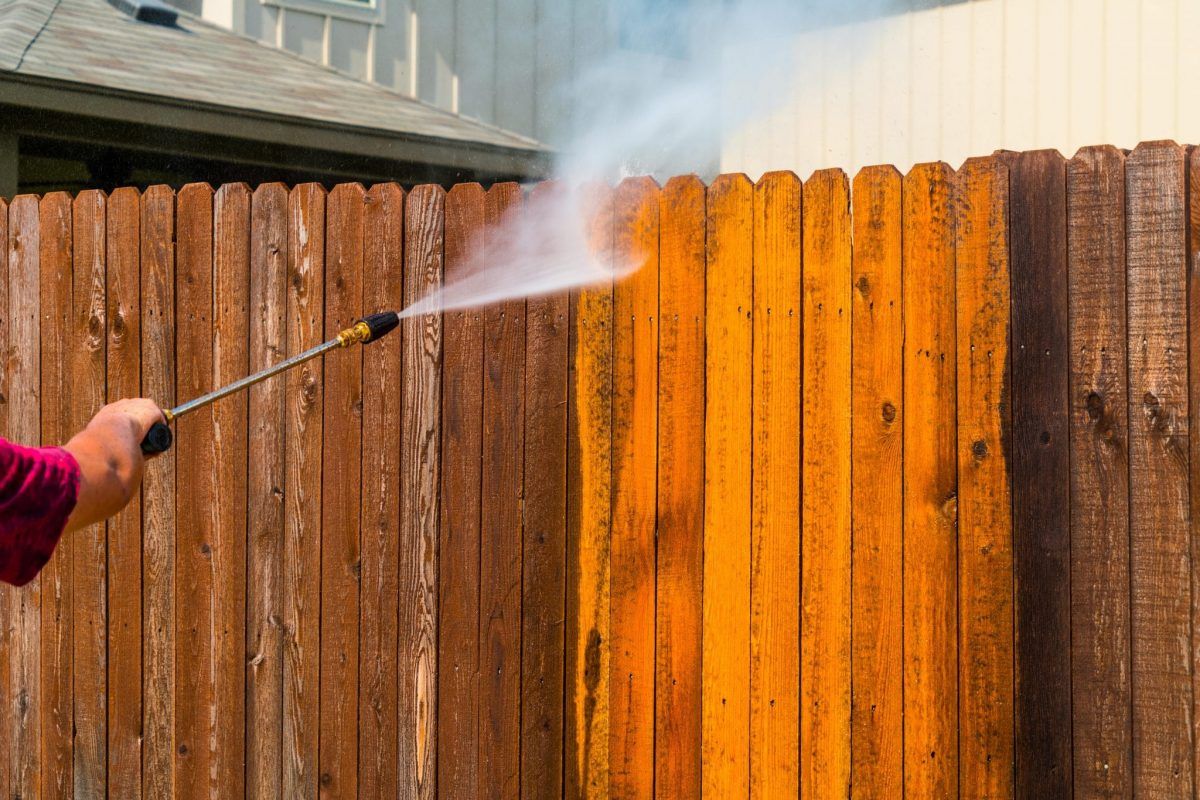
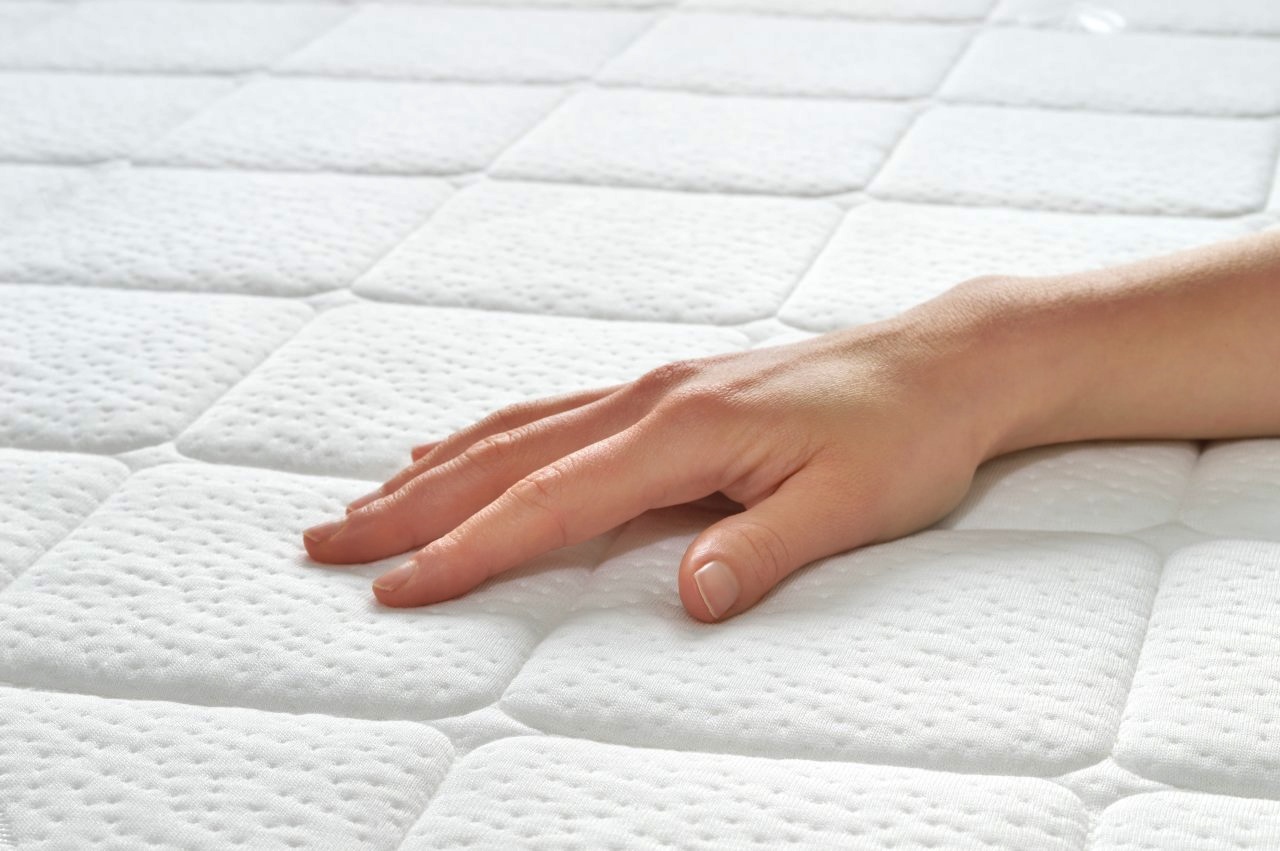

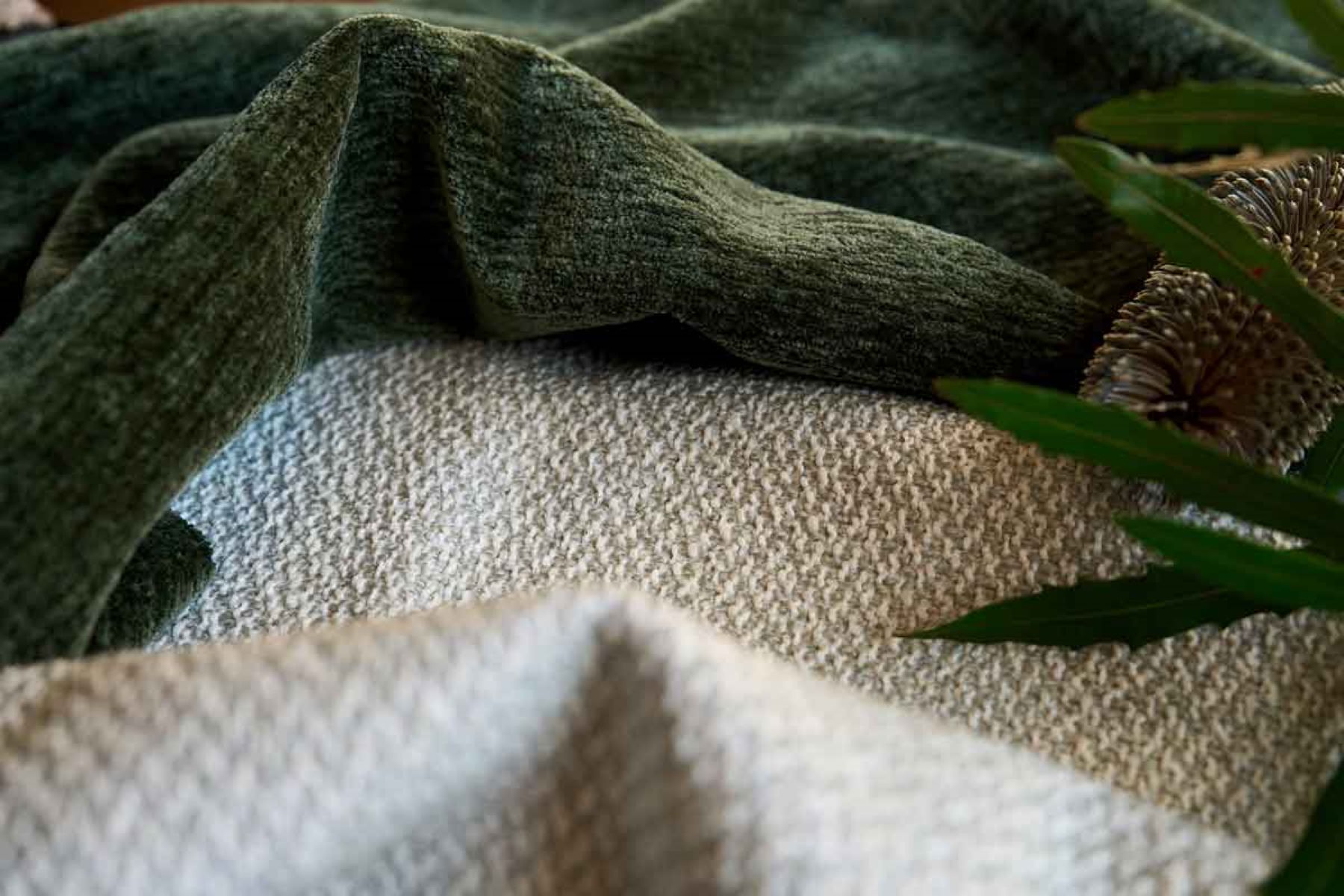
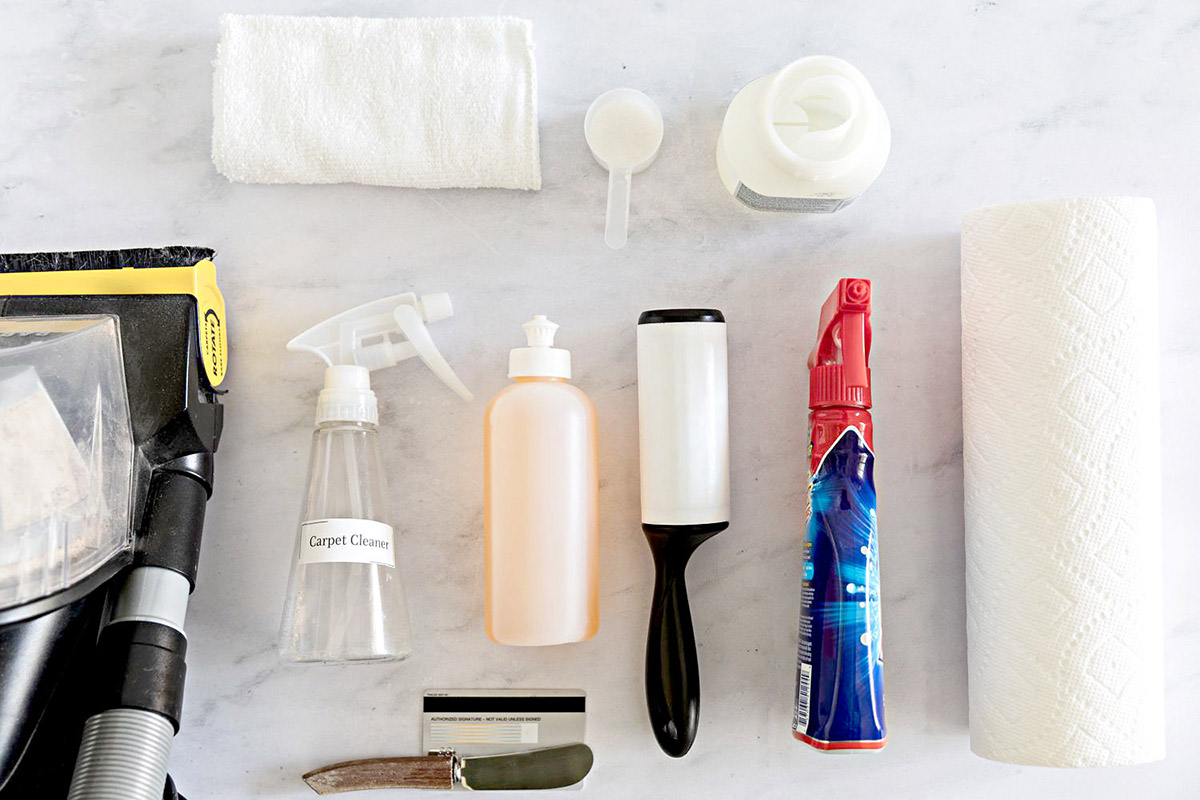
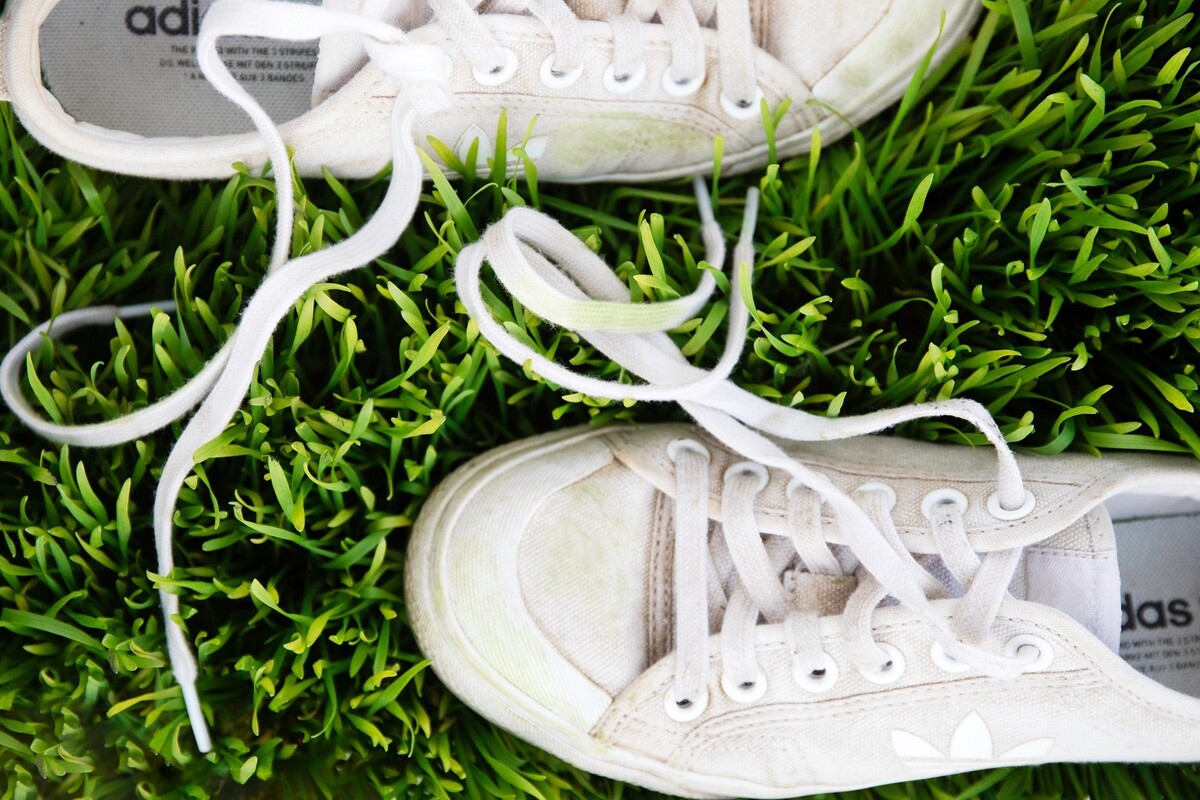
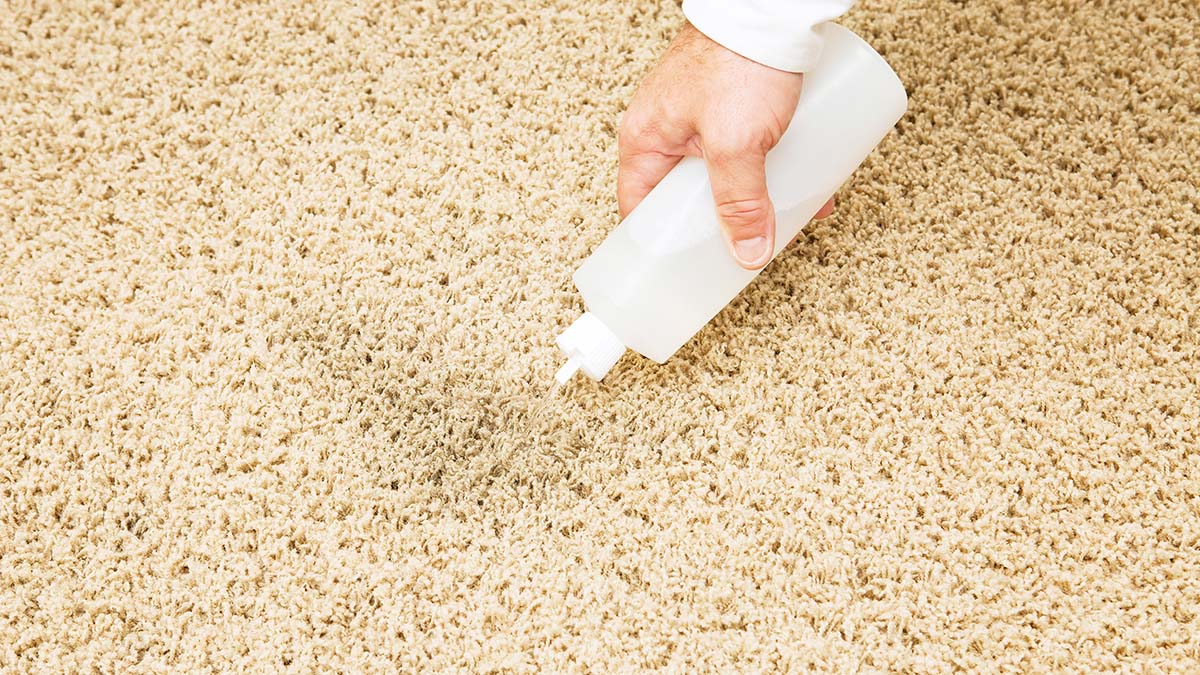
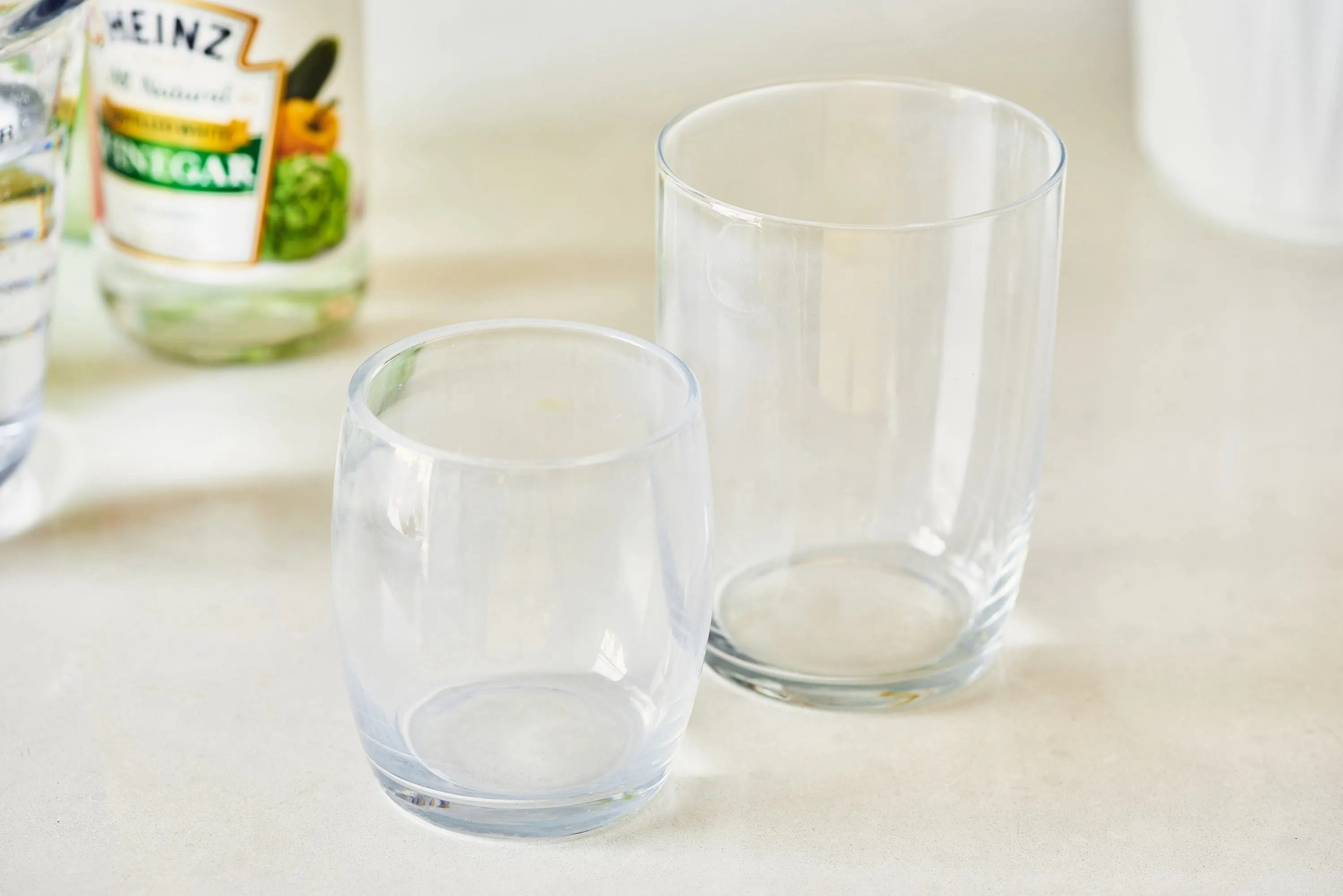
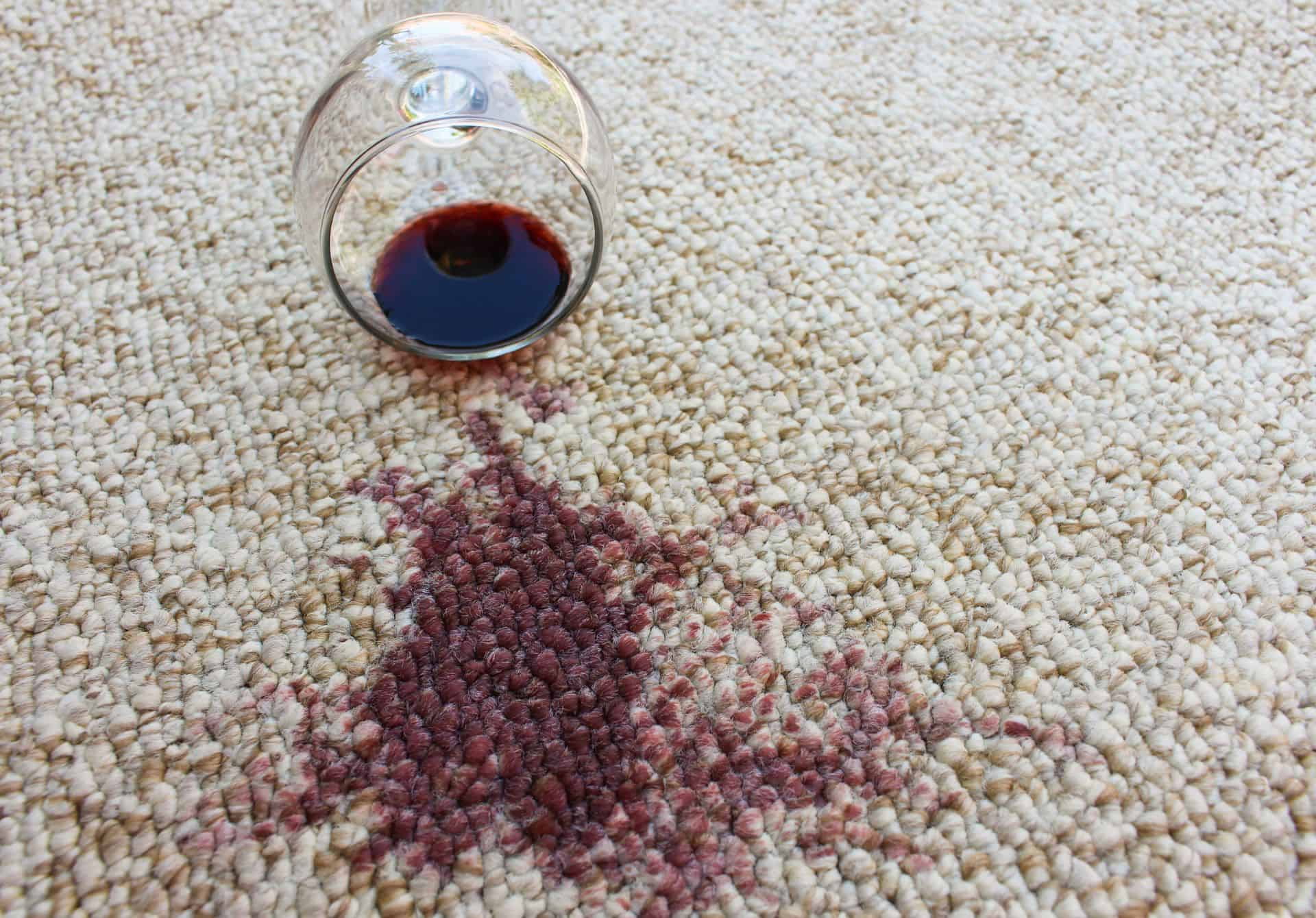
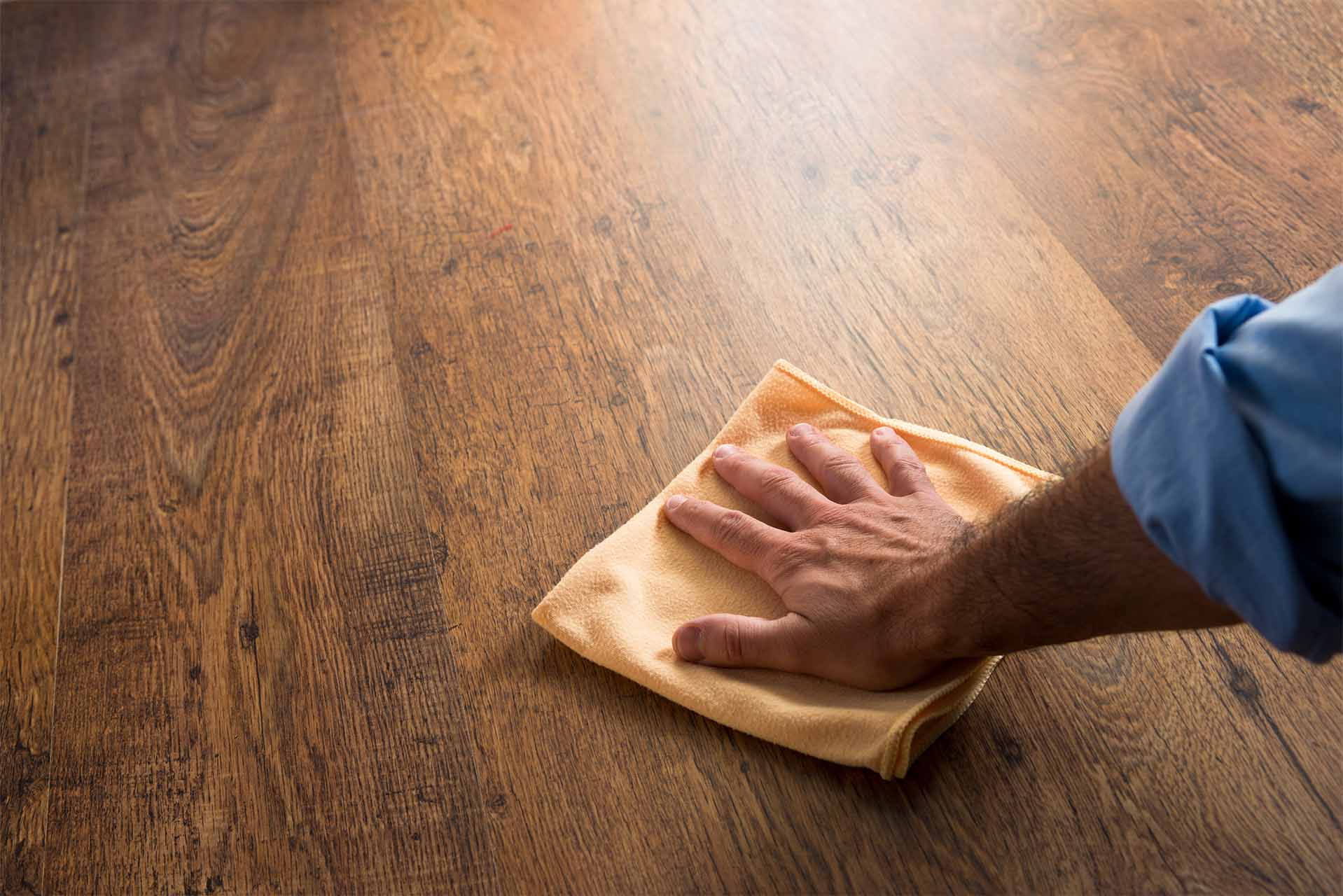
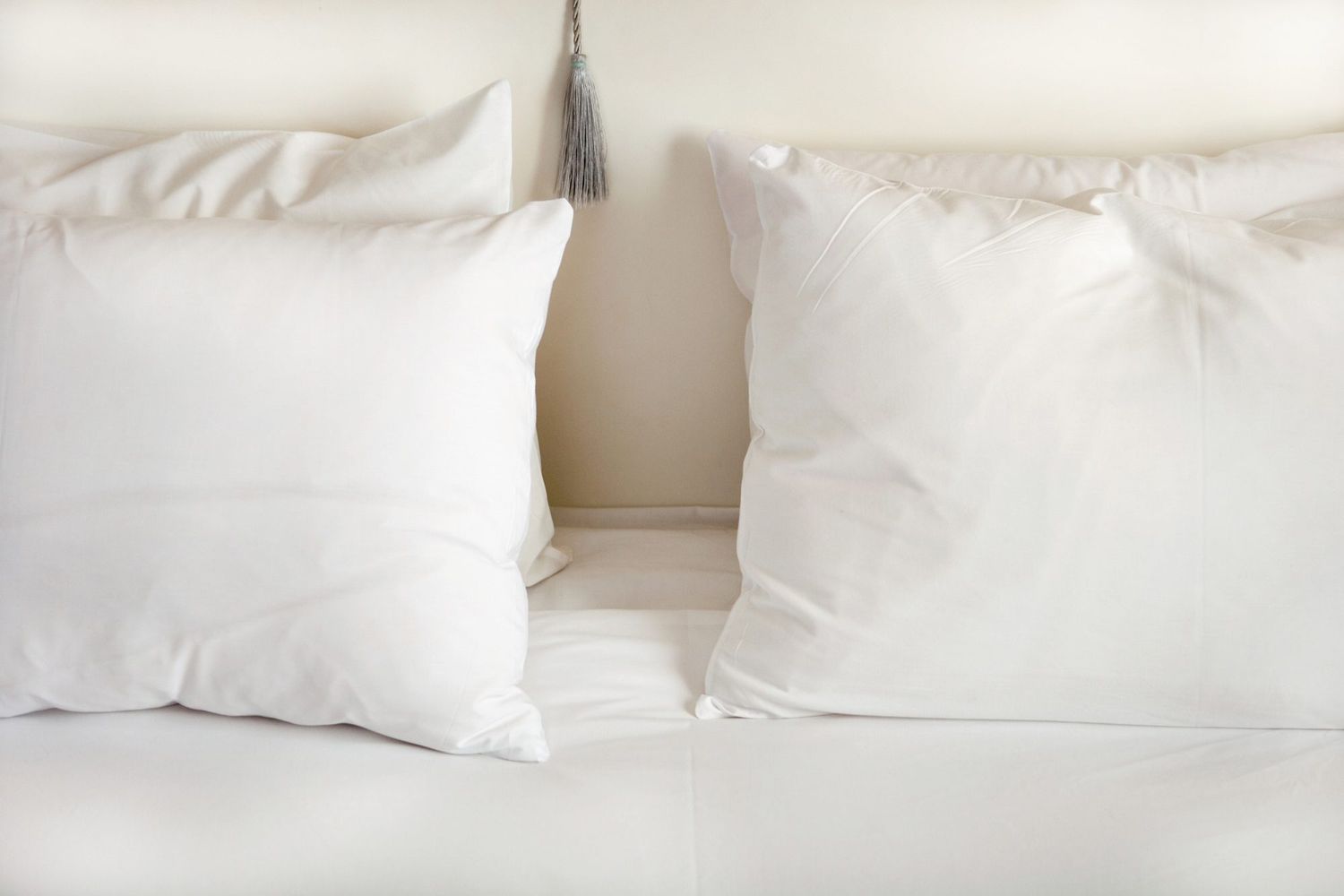
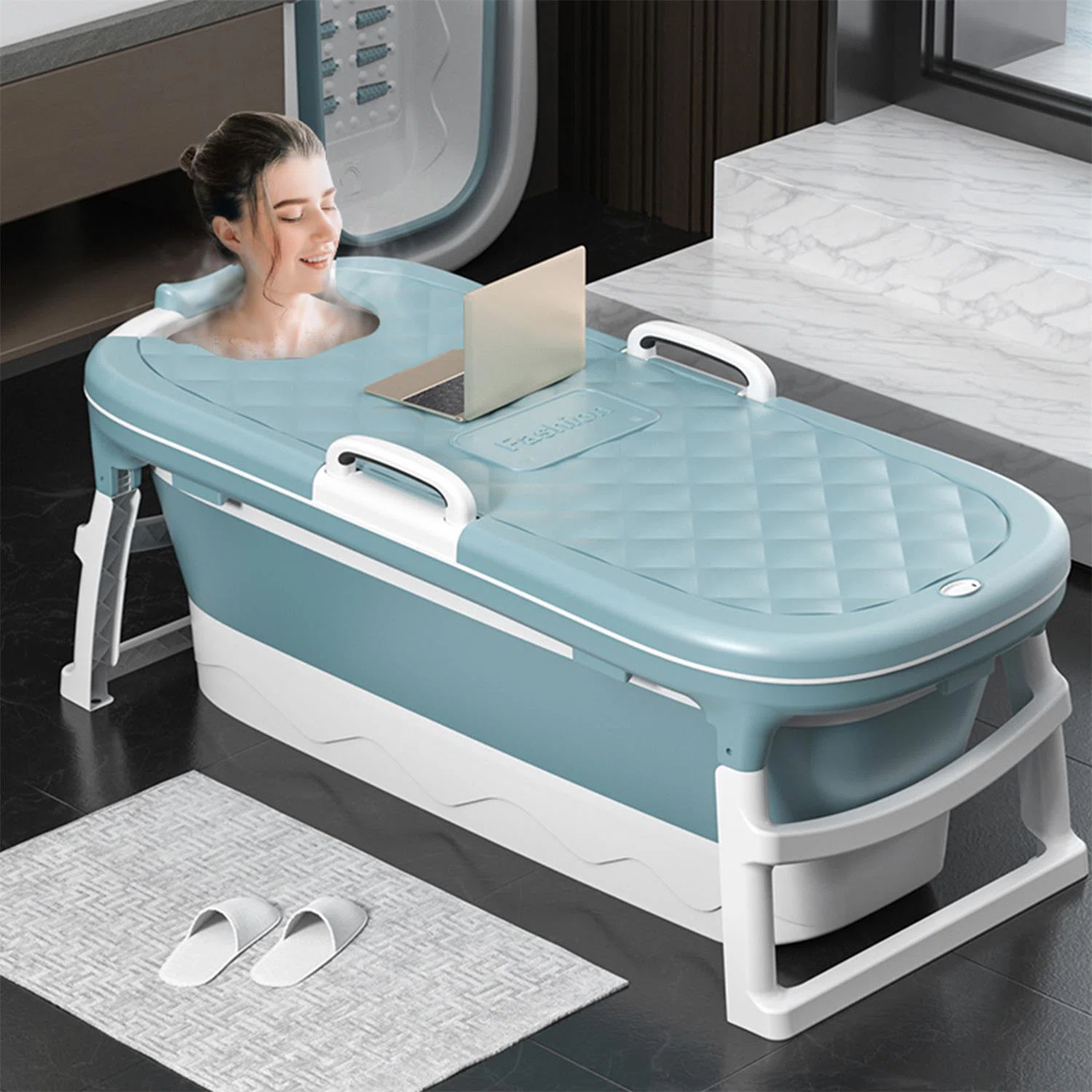
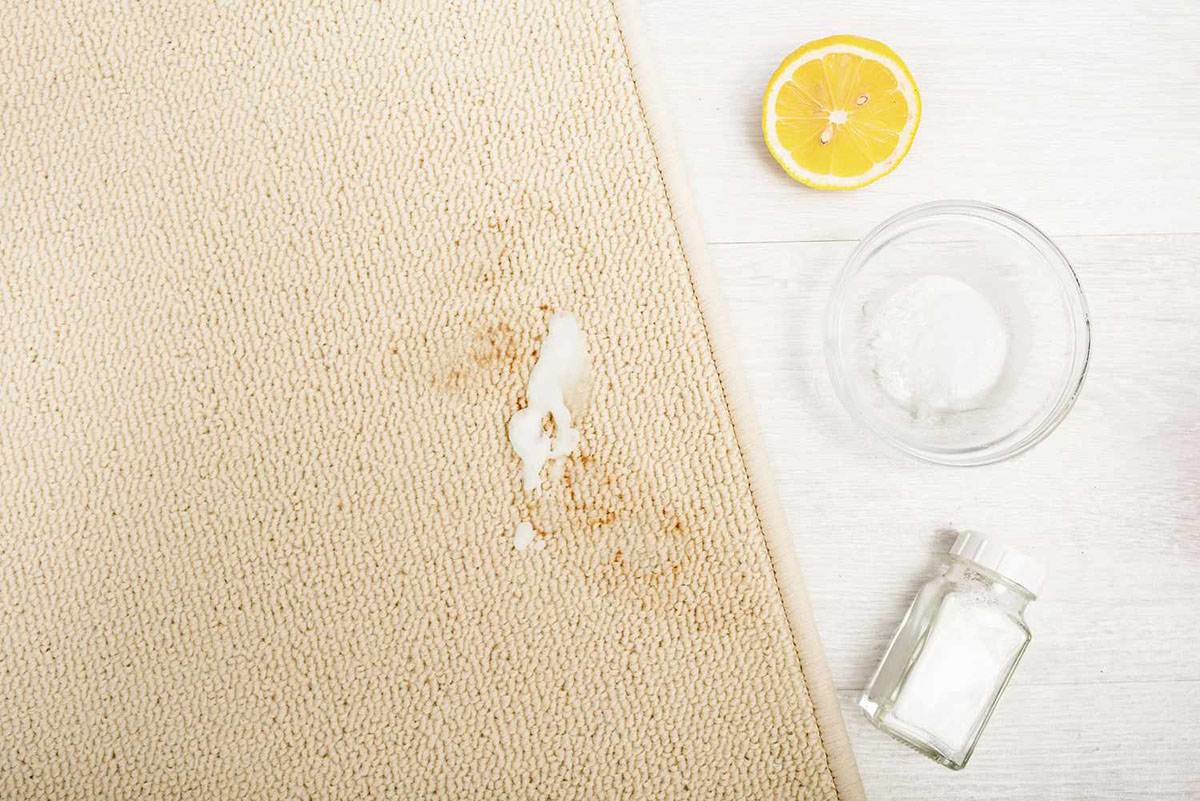

0 thoughts on “How To Remove Stains From A Blanket”